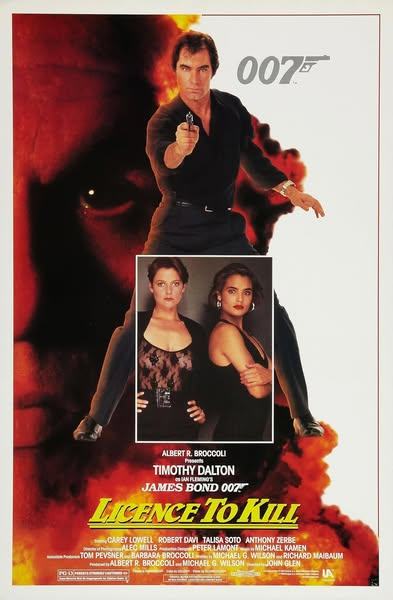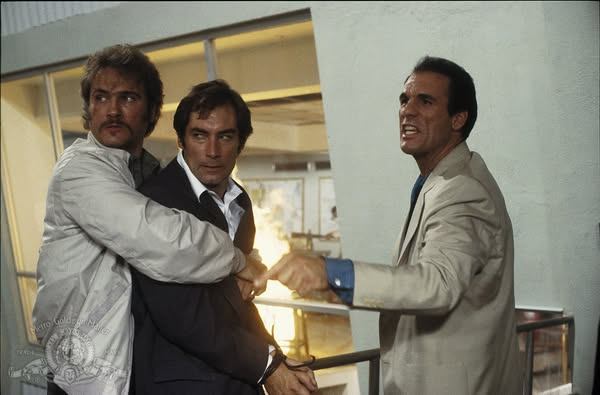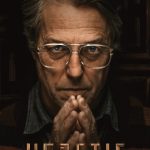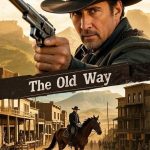License to Kill (1989)

License to Kill (1989) is the 16th James Bond film and the second and final outing for Timothy Dalton as Agent 007. Directed by John Glen, this installment takes a darker, grittier approach compared to previous Bond films, showcasing a more personal and vengeful side of the iconic spy.

Plot Summary
James Bond is on a mission of personal revenge after his longtime friend, Felix Leiter (David Hedison), is brutally attacked and left for dead by drug lord Franz Sanchez (Robert Davi). After M revokes his license to kill, Bond goes rogue, infiltrating Sanchez’s drug empire with the goal of bringing it down from within. Along the way, he teams up with Pam Bouvier (Carey Lowell), a resourceful CIA informant, and Q (Desmond Llewelyn), who provides him with weapons and gadgets despite Bond being disavowed.

Why License to Kill Stands Out
- Darker, More Realistic Tone – Unlike earlier Bond films that leaned into gadget-heavy espionage and campy villains, License to Kill delivers a gritty revenge thriller with a Miami Vice-style drug cartel plot.
- Timothy Dalton’s Performance – Dalton’s Bond is serious, intense, and ruthless, much closer to Ian Fleming’s original vision of the character. His portrayal is a departure from the suave and playful Bonds of Connery and Moore, making him more of a cold-blooded assassin when necessary.
- A Brutal Villain – Franz Sanchez (Robert Davi) is one of the franchise’s most realistic and menacing villains, running a global drug empire and operating with ruthless efficiency.
- Exciting Action Sequences – The film features explosive chase scenes, including an unforgettable tanker truck battle, one of the franchise’s most spectacular stunt sequences.
Legacy and Impact
Though License to Kill was controversial at the time due to its darker tone and lack of traditional Bond elements, it has since been reevaluated as one of the best Bond films. Dalton’s gritty and realistic take on the character paved the way for Daniel Craig’s modern interpretation, making this one of the most influential Bond films.











